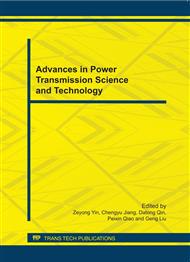p.850
p.854
p.858
p.863
p.867
p.871
p.875
p.879
p.883
Effects of Surface Roughness and Abnormal Surface Layer on Fatigue Strength
Abstract:
The purpose of this research is to evaluate the effects of surface roughness in normalized steel and the effects of abnormal surface layer in carburized steel on the fatigue strength that is considered as the limit of no crack initiation. Normalized and Carburized test pieces with crowned round notches were used in the fatigue tests, the normalized test pieces have different surface roughnesses and the carburized test pieces have different surface microstructures on the notch surface. The changes in fatigue strength due to the differences in the notch surface roughness and surface microstructure were investigated. As the conclusions, fatigue strength will be certainly increased by decreasing the surface maximum height, and removing the abnormal surface layer formed during carburized treatment leads to a marked increase in fatigue strength.
Info:
Periodical:
Pages:
867-870
Citation:
Online since:
August 2011
Authors:
Price:
Сopyright:
© 2011 Trans Tech Publications Ltd. All Rights Reserved
Share:
Citation:


